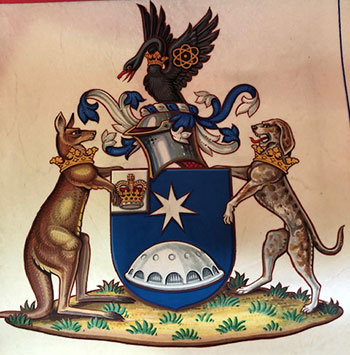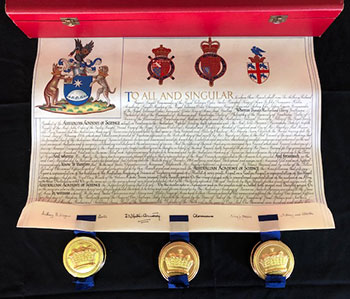
A coat of arms is a visual representation of identity that has existed since Medieval times. So, what does the Academy’s coat of arms represent?
The seven-pointed silver star represents the Commonwealth of Australia.
The Shine Dome is a throwback to the ancient practice of including a picture of your own castle on your coat of arms or herald.
The royal crown is included by special permission of The Queen, who presented the Academy with its Royal Charter in 1954.
The biological sciences are represented by the black swan, which is a unique Australian animal with a long history as a distinctive motif of the great southern land, in contrast to the white swans of the northern hemisphere. (In fact, Europeans once considered black swans more unlikely to exist than unicorns and dragons.)
The physical sciences are represented by the classic motif of an atom’s nucleus orbited by three particles, located on the swan’s wing.
On the left side, the kangaroo is taken from the Australian coat of arms.
The dog depicted on the right side is a type of hunting dog called a Talbot. This comes from the coat of arms of the Royal Society of London. It was used with special permission of the Council of the Society to signify the two organisations’ close relations, as well as the fact that the founding Academy Fellows were Fellows of the Royal Society resident in Australia.
Adapted from The First Fifty Years, edited by Frank Fenner.

© 2026 Australian Academy of Science